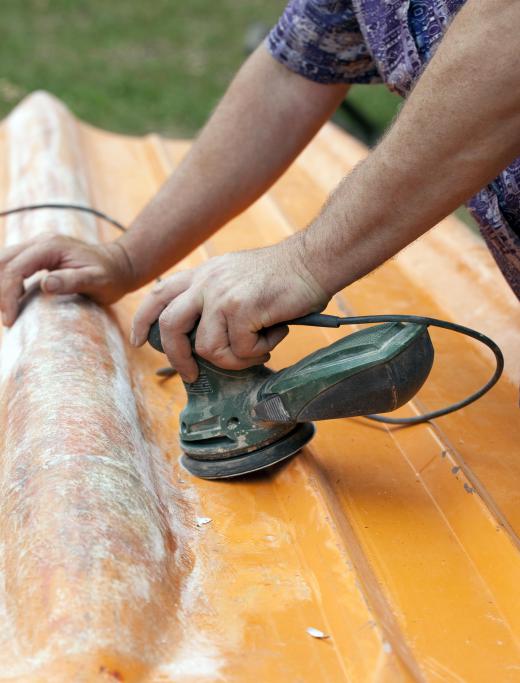The electric sander is one of the most widely used woodworking power tools. The two basic models are the portable sander and the bench sander. Portable sanders also fall into two categories: belt sanders and finishing sanders, which include finishing sanders, random orbit sanders, and detail sanders.
The portable belt sander is usually considered the most aggressive type of portable sander. It is engineered for heavy-duty sanding applications, and is mainly used to remove large amounts of material from a surface. This portable sander is designed with a continuous loop or belt of sand paper that is stretched across two pulleys that spin it. It is well-suited for smoothing down and leveling rough or uneven surfaces in the initial steps of a sanding project.

The portable finishing sander is often used after a bench sander for further, finer leveling and smoothing of a surface. The three main types of portable finishing sanders are straight-line sanders, random orbital sanders, and detail sanders. While all three types may be used for finishing purposes, they each excel in different applications.
The random orbital sander gets its name from its unique sanding motion, which incorporates two simultaneous motions. It is designed with a circular sanding pad, which is spun in a circle while simultaneously being moved in a random, elliptical loop. This dual sanding action eliminates the problem of swirl and belt-sander marks, creating a very smooth surface.

The random orbital sander is an aggressive type of sander, and is best-suited for sanding large surfaces. This tool’s random sanding motion allows the operator to sand the surface in any direction without scarring or scuffing the wood. It is often designed with a dust collector for nearly dustless sanding.
The straight-line finishing sander is designed with a rectangular, block-shaped base that holds a sheet of sand paper. This type of portable sander moves in a back-and forth motion along the grain of the wood. Unlike the random orbital sander, which has a circular sanding base, the straight-line sander has the capacity to get into corners, and also creates a much smoother surface. Smaller straight-line sander models are referred to as "palm" sanders.
Also called a profile or mouse sander, the detail sander is designed for use on contoured or odd-shaped surfaces and for detailed, intricate sanding applications. It often comes with attachments, and can be used for a number of different projects. The detail sander is well suited for use in millwork and craft projects.
